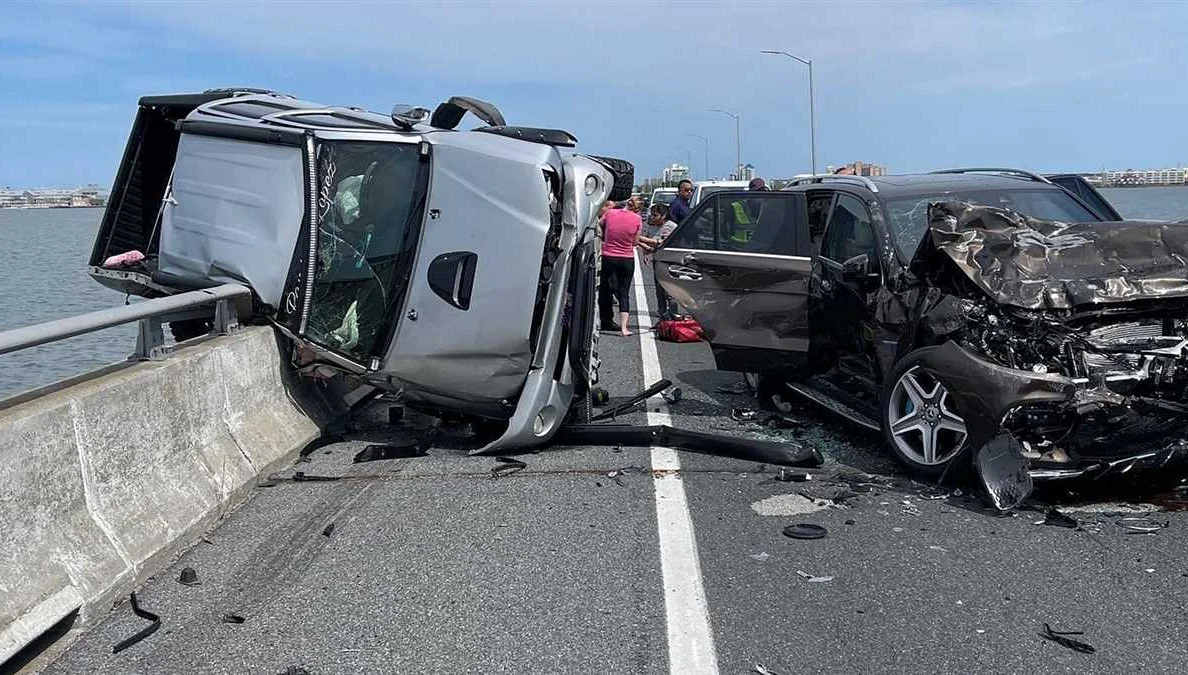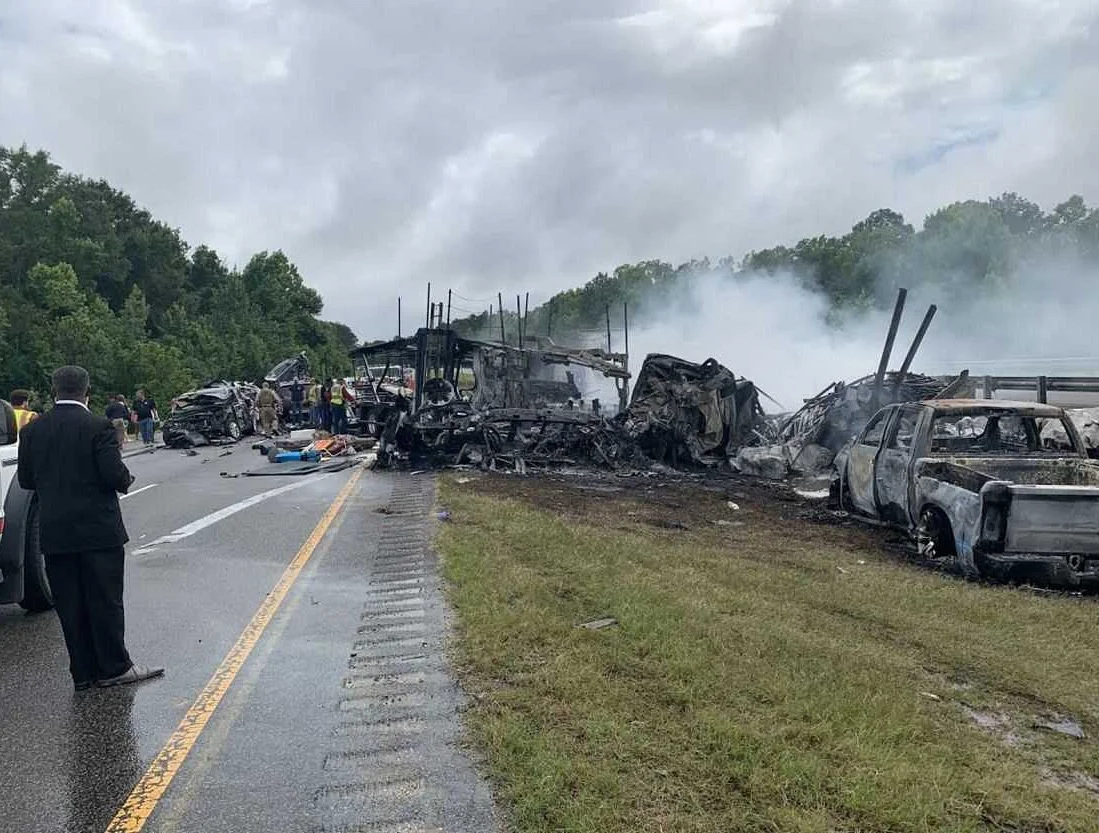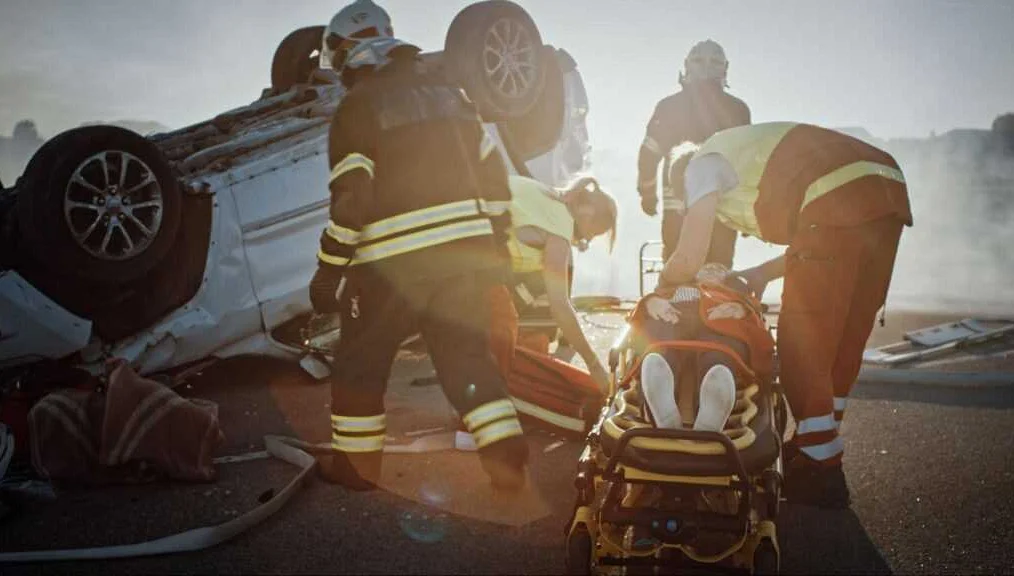New Approach to Rescuing Road Accident Victims
Содержимое
Find out how victims of road accidents will be rescued in a new and innovative way, utilizing advanced technologies and improved emergency response systems. Learn about the latest developments and initiatives aimed at reducing fatalities and improving the overall safety of our roads.
Road accidents continue to be a major cause of death and injury worldwide. In the event of an accident, the first few minutes are crucial and can often mean the difference between life and death. Traditional rescue methods, such as calling emergency services and waiting for help to arrive, can be slow and inefficient. However, a new approach is emerging that aims to improve the speed and effectiveness of rescuing victims.
This new approach involves leveraging technology and connectivity to facilitate immediate assistance to accident victims. One such innovation is the use of smart sensors and real-time data analysis. These sensors can be installed in vehicles and can detect when an accident has occurred. They can then automatically send an alert to emergency services, providing them with vital information such as the exact location of the accident and the severity of the injuries.
Another aspect of this new approach is the use of drones for rapid response. Drones equipped with medical supplies and first aid kits can be dispatched within minutes of receiving an alert, reaching the accident scene much faster than traditional emergency vehicles. This can be especially beneficial in remote or hard-to-reach areas where ambulances may take longer to arrive.
In addition to technology and drones, this new approach also emphasizes the importance of community involvement. Trained volunteers, such as off-duty medical professionals or first responders, can be alerted to nearby accidents and provide immediate assistance until professional help arrives. This not only saves valuable time but also increases the chances of survival for accident victims.
Overall, this new approach to rescuing victims of road accidents holds great promise in improving the outcomes for those involved in accidents. By leveraging technology, connectivity, and community involvement, it has the potential to save more lives and reduce the impact of road accidents on individuals and society as a whole.
New Approach to Road Accident Rescue

Road accidents are a common occurrence that can result in serious injuries and fatalities. Traditional methods of rescue and transportation of victims are often time-consuming and inefficient, leading to delayed medical attention and increased risk of complications.
However, a new approach to road accident rescue is now being implemented in many countries. This approach focuses on improving the coordination and efficiency of emergency services to ensure timely and effective response to accidents.
One key aspect of this new approach is the use of advanced technology. Emergency response teams are equipped with state-of-the-art communication systems and GPS tracking devices, allowing them to quickly locate and reach accident sites. This reduces response time and enables medical personnel to provide immediate care to the injured.
In addition, the new approach emphasizes the importance of training and specialization. Emergency medical technicians and paramedics receive specialized training in trauma care and advanced life support techniques. This enables them to provide advanced medical interventions at the scene of the accident, improving the chances of survival for critically injured individuals.
Another important aspect of the new approach is the establishment of dedicated trauma centers and helicopter emergency medical services. These specialized facilities are strategically located to ensure that victims of road accidents can receive specialized care within the golden hour – the first hour after the accident when prompt medical attention is critical for saving lives.
The new approach also encourages collaboration between various stakeholders. This includes cooperation between emergency services, hospitals, law enforcement agencies, and even the public. Awareness campaigns are conducted to educate the public on the importance of road safety and the appropriate actions to take in the event of an accident.
Overall, the new approach to road accident rescue aims to reduce the number of fatalities and injuries caused by accidents. By improving response time, providing specialized care, and promoting public awareness, this approach has the potential to save countless lives and minimize the long-term impact of road accidents.
Ensuring Rapid Response

One of the key aspects of a new approach to rescuing victims of road accidents is ensuring a rapid response. Time is of the essence when it comes to saving lives, and every second counts in emergency situations. Therefore, it is crucial to have a well-coordinated and efficient system in place to ensure that help arrives as quickly as possible.
One way to guarantee a rapid response is by implementing advanced technology and communication systems. For instance, using GPS tracking devices in emergency vehicles can help determine their exact location and route them to the scene of an accident more efficiently. Additionally, integrating these devices with traffic management systems can provide real-time information on road conditions, allowing emergency responders to choose the fastest and safest route.
Another important factor in ensuring a rapid response is the training and preparation of emergency personnel. It is essential for first responders to be well-trained in handling various types of accidents and injuries. Regular training sessions and simulations can help them develop the necessary skills and expertise to handle different scenarios effectively.
Furthermore, establishing a well-connected network of first responders, including paramedics, firefighters, and police officers, can significantly reduce response times. Collaboration and coordination between these different agencies are essential, as it enables them to work together seamlessly and provide a quicker and more effective response to road accidents.
In conclusion, ensuring a rapid response is a crucial aspect of the new approach to rescuing victims of road accidents. By implementing advanced technology, providing training for emergency personnel, and establishing a well-coordinated network of first responders, lives can be saved and injuries minimized. Every effort should be made to optimize the response time and save as many lives as possible.
Enhancing Emergency Communication

Effective communication is crucial in emergency situations, especially when it comes to rescuing victims of road accidents. The existing communication channels often face challenges that can hinder the prompt response of emergency services. Therefore, enhancing emergency communication is vital to improve the overall rescue process and increase the chances of saving lives.
One way to enhance emergency communication is through the use of advanced technology. For instance, the implementation of real-time messaging systems can enable immediate communication between drivers, emergency services, and other relevant parties. This can provide crucial information about the accident and its severity, allowing emergency responders to prepare and allocate resources accordingly.
Moreover, integrating GPS technology into emergency communication systems can greatly improve response times. By accurately pinpointing the location of the accident, emergency services can reach the scene faster, reducing the time it takes to provide life-saving assistance to the victims. This can be particularly beneficial in remote areas or situations where the accident location is difficult to access.
Another aspect of enhancing emergency communication is ensuring interoperability between different communication devices and systems. Incompatible systems can lead to delays and misunderstandings, which can be detrimental in time-sensitive situations. Therefore, establishing standardized protocols and compatibility guidelines can streamline communication and facilitate the exchange of information between various stakeholders.
Furthermore, raising awareness among the general population about the importance of effective emergency communication can significantly contribute to better outcomes. Educating drivers about the proper use of emergency communication channels, such as emergency phone lines or mobile applications, can empower them to take immediate action in case of an accident. Additionally, highlighting the role of bystanders in reporting emergencies and providing accurate information can create a network of reliable sources that can assist emergency services in their response efforts.
In conclusion, enhancing emergency communication is essential for improving the rescue process in road accidents. By leveraging advanced technology, ensuring interoperability, and raising awareness, emergency services can optimize their response times and provide timely assistance to victims. Ultimately, these efforts can make a significant difference in saving lives and minimizing the impact of road accidents.
Optimizing Medical Assistance

When it comes to rescuing victims of road accidents, optimizing medical assistance is crucial. Time plays a critical role in saving lives, and every minute counts. With the advancement in technology, new approaches have been developed to expedite the medical response and provide immediate help to those in need.
One way to optimize medical assistance is through the use of advanced communication systems. Emergency medical services can now rely on real-time data and GPS tracking to locate the accident scene, ensuring a faster response time. This technology allows medical personnel to reach the victims quickly, even in remote or difficult-to-reach areas.
Another aspect of optimizing medical assistance is the use of telemedicine. Through telemedicine, medical professionals can provide remote consultations and guidance to emergency responders on the scene. This allows for immediate medical intervention while the victims are being transported to a hospital, increasing their chances of survival.
Furthermore, the integration of medical databases and electronic medical records can greatly optimize medical assistance. Medical personnel can access the victims’ medical history and allergies, allowing for accurate and immediate treatment. This information can be shared seamlessly between different hospitals and healthcare providers, ensuring continuity of care.
In addition to technology, training and preparedness are essential for optimizing medical assistance. Emergency responders should receive comprehensive training on the latest techniques and protocols for treating accident victims. Regular drills and simulations can help ensure a cohesive and efficient response when an accident occurs.
Overall, optimizing medical assistance is vital in improving the outcomes of road accidents. Through the use of advanced communication systems, telemedicine, and the integration of medical databases, the response time can be reduced, and immediate medical intervention can be provided. By prioritizing training and preparedness, emergency responders can effectively save more lives and minimize the long-term impact of road accidents.